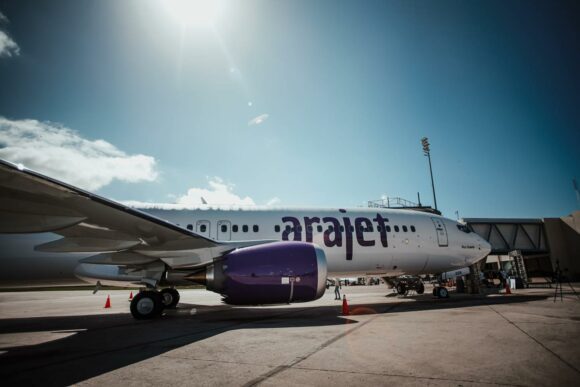
A350 Azul em Tarbes Franca antes da decolagem Divulgacao1
From Avianca and Boliviana de Aviación announcing an interline agreement to the launch of a new carrier in the region and the Department of Justice imposing a multi-millionaire fine on GOL Linhas Aereas, this was a very busy week for the Latin American aviation industry. Let’s take a look at the highlights from this week.
Avianca and Boliviana’s interline agreement
Latin America’s aviation industry’s busy week began on Monday when Avianca and Boliviana de Aviación announced a new interline agreement. This agreement would allow passengers to connect to and from seven cities in Bolivia and Avianca’s offer of 24 countries and 68 destinations in the Americas and beyond.
“So far in 2022, we have transported more than 80,000 passengers to and from Bolivia, with an occupancy factor of more than 76% on our flights. We know that Bolivia is a market in constant growth and development, so we are excited to offer our customers multiple options to connect this country, with all the possibilities of travel through our network, thanks to this new agreement,” said Julio Ordóñez, Avianca’s Director of Alliances.
Azul’s new Airbus A350
The Brazilian carrier Azul Linhas Aéreas took delivery this week of its first Airbus A350-900, five years after it was supposed to. The aircraft, which previously flew with Hainan Airlines (a former investor in Azul which took delivery of the planes once destined for the Brazilian operator), will be used to replace Azul’s aging Airbus A330-200 fleet.
Azul expects to receive up to five A350-900s with a capacity for 334 passengers. John Rodgerson, Azul’s president, said,
“We are delighted to present this news to our customers, crew, and partners. The Airbus A350 is one of the most modern aircraft in existence, which will bring much more comfort to our customers and more efficient in terms of fuel consumption and CO2 emissions, bringing a reduction in the cost per seat when compared to the A330ceo aircraft, which currently fly Azul long-haul flights.”
GOL’s encounter with the law
On Thursday, the US Securities and Exchange Commission and the Department of Justice announced they charged GOL Linhas Aéreas with a US$157 million fine to settle charges after violating the Foreign Corrupt Practices Act.
Due to GOL’s “demonstrated financial condition and inability to pay the fines in full,” the airline will only pay about $44.9 million.” GOL’s bribery charges took place between 2011 and 2013 when the airline paid about $3.8 million to Brazilian politicians to lower certain taxes benefiting the airline, which avoided paying around $39.7 million.
Latin America’s new airline
That same day, the region saw the birth of a new airline. Arajet, a startup headquartered at Santo Domingo’s Las Américas International Airport (SDQ), launched operations with a fleet composed of five Boeing 737 MAX 8 aircraft.
Its first flight was between Santo Domingo and Barranquilla, Colombia. The airline aims to fly to 13 destinations in nine countries across the region. The destinations are Aruba (AUA), Barranquilla (BAQ), Cali (CLO), Cancún (CUN), Cartagena (CTG), Curazao (CUR), Guatemala (GUA), Lima (LIM), Monterrey (MTY), Mexico City (NLU) San Salvador (SAL), and St. Marteen (SXM).
Arajet also has an order with Boeing for 20 737 MAX-8-200 planes and options for 15 more. Deliveries will begin in 2024.

Views: 0




